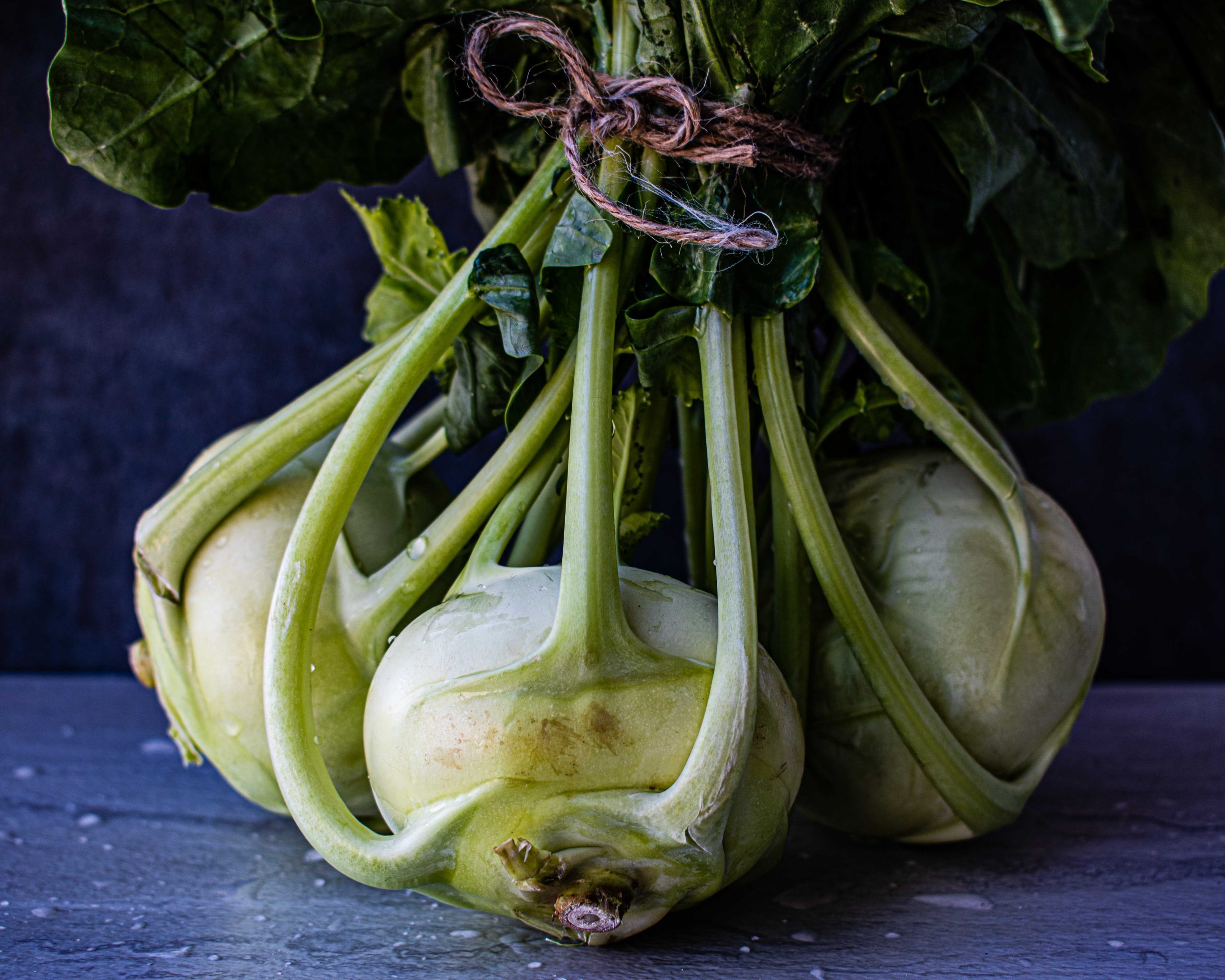Last Updated on April 16, 2024 by Real Men Sow
Growing vegetables is a challenging and rewarding journey. If you are relying on nature to take care of everything for you, it may take a longer time to harvest your first vegetable. Every season is valuable for planting, sowing, and harvesting, even the chilly, dark winter. Overwintering vegetables is an amazing way to surprise your garden with fresh vegetables. Each winter veggie requires a unique method and plan to grow between the late summer to September.
10 Best Overwintering Vegetables to Try and Grow
- Kohl Rabi
- Garlic
- Spring Cabbage
- Turnip
- Oriental Salads
- Broad Beans
- Radish
- Kale
- Perpetual Spinach
- Onions
Beginner’s Guide to Overwintering Vegetables
Kohl Rabi
Kohl Rabi is a quick-growing crop that’s a good choice as an Autumn vegetable as long as your seedlings are planted in early August. Sow 1 seed per module, 1.5cm deep. Plant them out 3 – 4 weeks later with 30cm between plants and 30cm between rows.
 Garlic
Garlic
You’ll only have to plant a clove in the ground, and you’ll end up with a full bulb by Autumn. It takes 6 weeks of temperatures below 10°C for cloves to multiply. This is why planting garlic is best to do in Autumn to early Spring. If you live where there’s always a high chance of rainfall, raised beds are recommended or just simply delay planting them until spring.
Spring Cabbage
Spring Cabbages planted in autumn will give you tasty conical-shaped heads in spring. It’s best sown in July to mid-August. Make sure to keep an eye on slugs in mild winter because they may wipe out your new seedlings.
You may sow indoors in modular trays, after 3 – 4 weeks you may start planting them out. Remember that you only have to put 1 seed per module and they should be placed in 1.5cm deep.
 Turnip
Turnip
White Turnips, especially the quick-growing variety (like Tokyo Cross) will give you an excellent harvest before Winter. Growing Turnips is quick, relatively trouble-free, and easy. You can use Turnips as a crop that would be planted to the beds that were left bare after harvesting.
It’s best to sow 1 seed per cell, 1.5cm deep in modular trays. When you’re going to plant them out, thin drill them to 25cm between plants and 30cm between rows. If you’re planning to sow them outside, the drills should be 2cm deep and 10cm apart.
Oriental Salads
Oriental Salads grow best in cooler temperatures, making this one of the best overwintering vegetables. Sow them in mid-September to have a decent size of it by the time they start growing slowly in the Winter (from November and onwards). Plant the Mustard Golden Frills and Ruby Streaks Varieties, which are the tastiest salad leaves and are impossible to grow during Summer.
Broad Beans
The Aquadulce Claudia variety of Broad Beans are best for Autumn, you can sow them from September until early November. You’ll be harvesting them a month earlier than a crop that was sown in Spring. Sowing winter broad beans protects the soil that would usually be exposed to the wet winter weather.
How to Sow Broad Beans for the Winter
Sow your seeds 5cm deep, 15cm apart between plants, and 45cm apart from rows. If you’ve sown them indoors you may be able to plant them out 3 weeks later. Remember to stake your plants 1 meter apart and tie the plant with twine to support it.
King of Overwintering Vegetables: Kale
Kale is highly nutritious and delicious when cooked properly. They are also easy to grow and can survive the harshest winter. Although you’ll only get winter harvest if they’re big enough, don’t worry about their size if you can wait for Spring to see them in action.
It’s better to grow kale in modular trays than sowing the plants directly. Sow 1 seed per cell, 2cm deep by the end of June to plant them out 3 weeks later. Plant them out before the roots become restricted.
Perpetual Spinach or Chard
Chard is grown easily because it doesn’t suffer much from pests and diseases. They produce more leaves once you’ve picked one. They can also survive the cold conditions outside in Winter. However, Chard has a slightly bitter aftertaste but planting them in Autumn and overwinter makes them less bitter.
Sow 1 seed per cell in modular trays, they’ll be ready to be planted out 3 – 4 weeks later. Remember that Chard seeds are clusters of 3 or 4 seeds, so you’ll have to weed the weaker seedlings that will appear in each module.
Radish
Radishes are quick maturing plants and can be harvested about 4 weeks after sowing. Sowing Winter Radishes (like Black Spanish Round) are sown in July or August to be harvested in October. You’ll have to store them well in boxes of sand or in a plastic bag at the bottom of your fridge. Winter Radishes take longer to grow than Summer Radishes but can be roasted and sauteed unlike small summer radishes. Sow your seeds directly at 2cm between plants and 15cm between rows.
Onion and Spring Onion
Growing Onions in Autumn gives you the chance to harvest them earlier, however, this is not advisable if your garden is prone to water logging in Winter. You can plant onion sets (radar or senshyu yellow) in September or October to be able to harvest them in May.
Steps to Overwintering Onions
Spring Onions can be sown until early August. You can exceed that if you have a polytunnel, and that would give you good and crunchy onions. You’ll have to sow 8 – 10 seeds per module. Plant each module 25cm between plant and 30cm between rows. You’ll only have to pull the bunch up when you’re harvesting.

